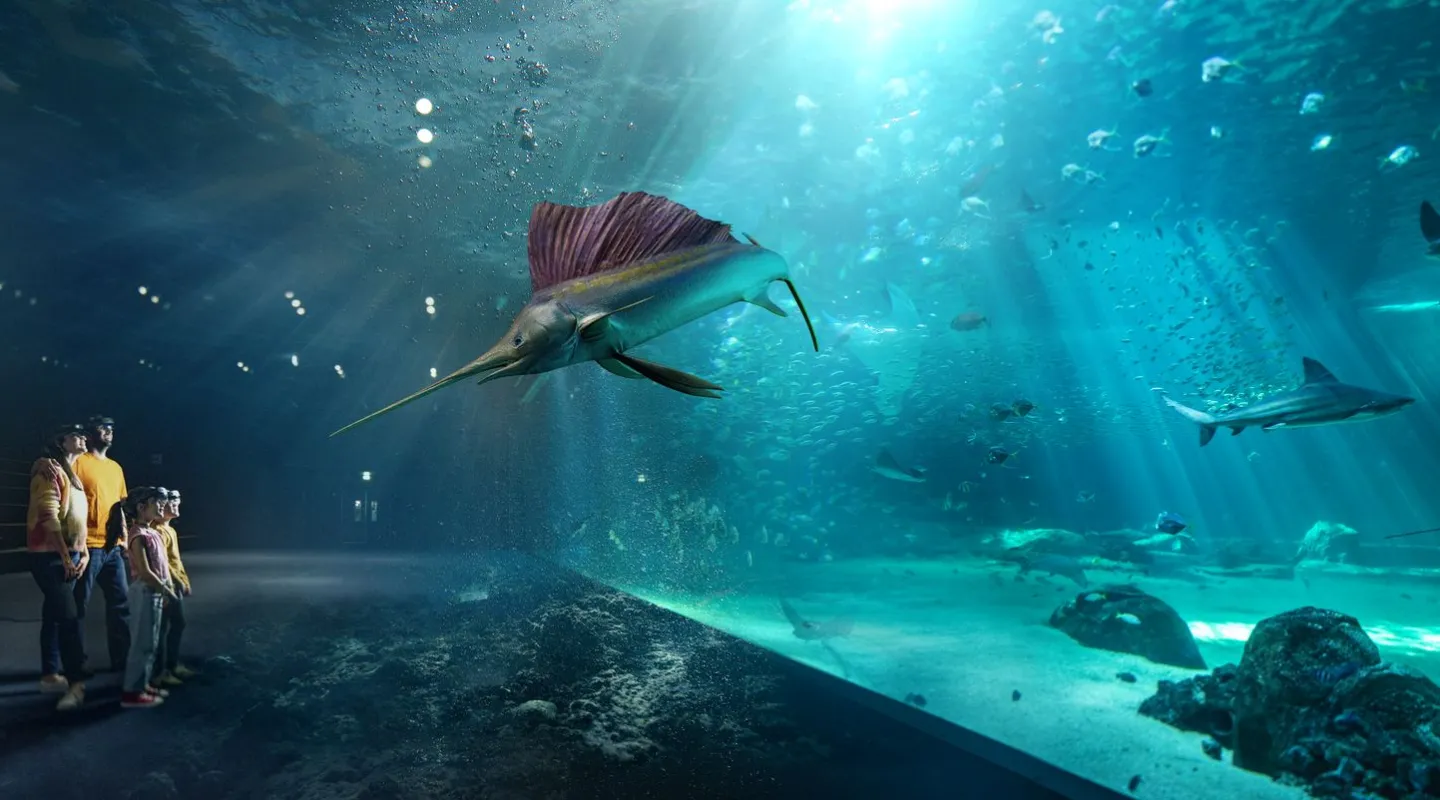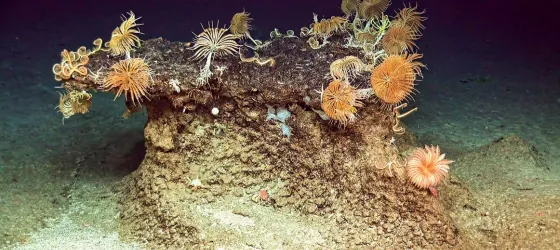Virtual animal in augmented reality
The sailfish is one of the impressive figures that you will be able to discover in the Grand Large experience.

Virtual animals
Virtual animal in augmented reality
The sailfish is one of the impressive figures that you will be able to discover in the Grand Large experience.

Identity card
Not Evaluated
Tropical and temperate waters of the Pacific, Indian and Atlantic Oceans, in the Mediterranean.
Between 0 and 40 m, in the open sea and also near the coast.
2.7 m on average, 30 to 40 kg, 100 kg max.
Fish, crustaceans and cephalopods
13 years

The sailfish is the fastest fish in the oceans: it can reach speeds of up to 100 km/h!
This speed was observed during a fishing catch when the sailfish unwound 91 m of fishing line in 3 seconds!
The sailfish is an oceanic and epipelagic fish (that is to say it lives at depths of between 0 and 200 metres) that is mainly found in waters close to the coast and around islands. Sometimes swimming in shoals or small groups spread over a large area, sailfish group together according to their size.
This species is often taken as bycatch, but it is also targeted by certain fisheries. It can be consumed fresh or smoked, and is used in sushi. It is also valued as a game fish, and this could constitute a threat for this species which lives in coastal waters and close to islands.
This highly migratory species is included in Appendix I of the United Nations Convention on the Law of the Sea of 1982 (FAO, Fisheries Department, 1994).
journey on the high seas

Augmented-reality animals
The Ocean Mag
A la une
Faced with the threat of deep-sea mining, we must join forces to protect the deep seabed!

Article
What lies beneath the surface of the ocean?
Article
Depending on whether they live in open water or on the bottom, fish in the water column have a morphology adapted to their living environment.